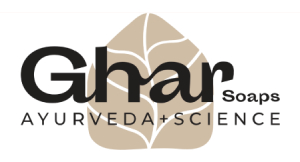
Running a business has never been everyone’s cup of tea, especially in the era of digital marketing, where a new website pops up every day. Gone are the days when you could simply tell users whatever you wanted them to know. Now, it’s essential to create powerful content that matters, keeping in mind both SEO and content strategy.
This means you have to keep in mind the ever-changing Google algorithms, relevant information, and customer requirements while incorporating the principles of YMYL and E-E-A-T.
All mixed up? Don’t worry; we’re here to guide you through every aspect of SEO content strategy, ensuring that you fully understand how to implement it effectively for your business.
What is E-E-A-T?
As the name suggests, E-E-A-T stands for Experience, Expertise, Authoritativeness, and Trustworthiness. This is a concept used by various search engines like Google to evaluate the quality and reliability of content.
Here, Experience refers to the creator’s real-world knowledge of the topic, while Expertise focuses on their skill level or training in the field. Authoritativeness reflects how respected and well-known the source is, and Trustworthiness ensures the content is credible and honest.
Together, E-E-A-T in SEO helps search engines determine which content is most likely to be user-friendly, providing a better browsing experience.
Also Read: Why Does Your Business Need Local SEO?
Benefits of Creating User-First Content For Your Business
A plethora of benefits can easily be listed when creating user-first content. However, we have curated the top-tier points for utmost accuracy:

1. Improved engagement and retention
Focusing on the needs and interests of your audience results in better engagement. By creating user-specific content, your customers are more likely to trust your brand, spend more time on your website, and visit more frequently.
2. Higher SEO rankings due to improved user signals (dwell time, bounce rate)
Another bright side of creating well-researched, user-specific content is that it encourages your audience to stay on your site longer and explore more pages. This reduces bounce rates, and increases dwell time, resulting in higher SEO rankings.
3. Enhanced brand loyalty and trust
Building brand goodwill is essential if you’re willing to stay in the long run. When your audience trusts the information you provide, they are more likely to return to your site and recommend it to others, strengthening loyalty and trust.
Understanding the Core Elements of User-First Content
Before understanding the technicalities behind the core elements of user-first content, let’s imagine a scenario: You’re searching for a nearby restaurant that serves North Indian cuisine. You expect to see a list of restaurants based on your search, but instead, the first page is filled with information like “top restaurants suitable for fine dining” or “best couple-friendly restaurants”… Wait, what?
The visitor is likely to get confused and ignore the results altogether. This is where Google helpful content update plays an important role by providing the exact information you’re looking for. It comes down to knowing your audience and providing them with the exact reliable information while understanding YMYL and E-A-T, i.e.Your Money or Your Life and Expertise, Authoritativeness, and Trustworthiness, respectively.
The core elements of user-specific content are based on the principles of EEAT, which are:
1. Experience
It focuses on real-world knowledge or firsthand experience curated by the content creator. Sharing genuine experiences while creating a content marketing strategy is important because it provides authentic insights.
2. Expertise
This refers to the creator’s skills or qualifications in a specific field. Content that demonstrates expertise is more likely to resonate with the audience.
3. Authoritativeness
This indicates that the content comes from a recognised and trusted authority. A reputable website that is known for providing valuable information is generally trusted by both users and search engines.
4. Trustworthiness
This relates to the reliability of the content. Content that is accurate and honest, without spreading false information, is the preferred choice of both users and search engines.
Together, these elements are essential when creating any SEO and content strategy.
Also Read: Most Effective SEO Activities Of 2025
Steps to Create User-First Content
Creating user-first content is not a hard pill to digest if you seek the right guidance from a content marketing agency, remember, an expert always shares better experiences! Here are some steps you need to follow while creating user-first content:
1. Conduct Audience Research
Understanding who your audience is quite essential. Tools like social media insights, surveys, and keyword research are used to gather valuable data as they help in knowing the audience better while resonating with the content they like.
2. Map Content to User Intent
Make sure that your content addresses the specific questions & goals that your audience has. Whether your user is seeking information, looking for entertainment or making a purchase, keep your content aligned according to the user and search engine to enhance relevance and engagement.
3. Write for Readability
People prefer content that is easy to read and digest. Using concise language, along with bullet points, short paragraphs, and clear headings, helps users find the information they need quickly and effectively. Keeping the tone conversational also plays a crucial role in creating engaging content that matters. Additionally, a well-crafted introduction, a well-structured body, and a clear call to action are essential for enhancing readability.

4. Make It Interactive
No one wants to read a piece of content that is full of definitions and dense information. Incorporating interactive elements when sharing information adds a personalized touch for users. Consider using examples, polls, quizzes, and infographics to better illustrate your points. These features not only boost engagement but also provide value to the user, encouraging them to spend more time on your website.
5. Focus on Mobile Optimization
Mobile optimisation is a critical step in creating user-centric content. With more customers using mobile phones to search for information, it’s essential for any D2C agency to ensure content is optimised for smaller screens. Use responsive design to make videos and images load quickly and ensure links and buttons are easily visible and clickable on mobile devices. Simplifying the layout is key to making complex content look mobile-friendly and user-friendly.
By following these steps, you can improve your search engine rankings and increase engagement with your audience.
Also Read:
Conclusion
Moreover, if you want to create content that excels in SEO and content strategy, following these steps will set the right tone for your target audience. If you want SEO experts to handle your website and take your business to new heights, trust Digi Acai. Digi Acai is an award-winning e-commerce SEO agency in India that is perfect for your business. We provide SEO services, content marketing, influencer marketing, and expert e-commerce consultation.
FAQs
1. How can user-first content improve SEO?
User-first content is known to improve SEO by focusing on what users actually want and need, resulting in longer time spent on the website and higher engagement.
2. What types of content work best for a user-first approach?
First of all, it is important to understand your niche and then focus on topics like informative blog posts, how-to guides, and content with videos, quizzes, and other interactive elements.
3. How often should I update my content to keep it user-first?
The ideal period for updating content is generally every 6 to 12 months. This is recommended due to the constantly changing landscape, ensuring that you provide relevant and valuable content to users.
4. What tools can help me create user-first content?
When creating an SEO and content strategy, you can use tools like BuzzSumo, Grammarly, Google Analytics, Ahrefs, and SEMrush. These tools help you find relevant keywords and ensure your content is both engaging and error-free.








